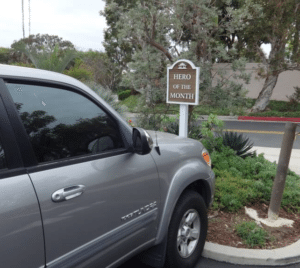The World Your Customer Lives In
Often, we get too close to our businesses to truly appreciate the real world of choices and expectations consumers have on what and where they spend their money and why they act the way they do.
We’re so passionate about the products we sell and the benefits they provide, but don’t always realize that most of our customers will never share the same zeal we have, resulting in a disconnect between our expectations of consumer behavior and the expectations of the consumers themselves.
Though we’re not currently selling much of our product online, the rising popularity of online shopping is fermenting a change in consumer attitudes and expectations on what we do and how we do things in a brick-and-mortar store.
I can’t stress enough that, as an industry, we’re still selling plants, flowers, trees, shrubs and all the stuff that supports them, while the customer is buying experiences, both in-store and at home.
They’re purchasing solutions, success and enhanced quality of life. They’re purchasing satisfaction, confidence, knowledge and convenience. They’re purchasing ideas, inspiration, pride, sustainability and dreams.
If there’s a gap or void between what we’re delivering and what the consumers’ expectations are, then we (not they) have a major problem!
Closing this void can reduce costly customer churn/turnover by anticipating and resolving issues and building deeper engagement.
Creating the Experience
You’ll be hearing the term “engagement” much more frequently in the future because it’s a critical component of consumer interaction. Every customer touch or “engagement” is another opportunity to provide a positive experience. Without engagement, there cannot be positive experiences; and without positive experiences, we will never be able to tap our sales potential.
Deeper engagement results in stronger relationships and loyalty, both keys to longterm success.
Based on a recent study by Silverpop and Ecoconsultancy, here are a few key findings that relate to the experience void discussion:
1. Most customers are lost for reasons the company can control.
The majority of customers are satisfied with a company’s products and services; it’s the poor experiences and the retailer not understanding and/or meeting the customer’s expectations that are the root of the problem.
2. Value and relevance work together for a good customer experience.
Remember the ingredients for success that we’ve discussed in the past … a strong comparative value proposition; relevancy of our products to today’s consumer life circumstance and lifestyle; and authenticity.
3. Companies that manage the lowest points in the customer relationship are more likely to retain their customers.
Customer relationships are based on foundational building blocks; if you can manage the first step successfully, you then have the opportunity to start relationship building.
One of the buzzwords in all of the engagement, experience and relationship discussions is “personalization,” especially as it relates to applying technology to enhance interactions down to the individual consumer level.
The concept is based on the acceptance that consumers understand that activity and purchases equate to a collection of information and their preferences by the retailer.
To find success, retail marketers will need to engage on a more personal level and market to specific individual needs and interests. But to me, the term “personalization” always seemed a little squishy, something a bit ethereal and without a lot of substance … until I had my aha moment.
When Personalization Really Works
Many retailers, large and small, offer the option of providing an emailed receipt, a printed receipt or both at checkout, as a means of providing customer convenience and to capture your email address in the retailer’s POS database for future use … nothing new here.
However, recently the application and expansion of this took on a new meaning for me at Home Depot. A little background … my wife decided we needed a new garage service door on the side of the house (the house was built in 1977 and this was the original weather-beaten door, so it was definitely due for replacement).
Based on my past storied track record on tackling even somewhat simple structural home improvement projects, she strongly urged me to consider having a professional do the job. So we started our due diligence.
First we shopped two other home improvement chains that would sell us the door and had a list of independent preferred installers we could contact to negotiate the installation of the door.
When we visited Home Depot (HD), the process was significantly different; the salesman explained that HD would have one of their contract installers come to my home to take the measurements, discuss the door and hardware options with us and provide an installed quote. Once we agreed, they would place the order, bring the door with them and install it.
OK, here’s where personalization meets reality. When we agreed to start the process, the HD salesman went to his tablet. He asked for my phone number and, alas, I was already in their system based on a prior purchase. This allowed the pre-filling of all of my contact data on the form, which was a barcoded form specific for this transaction that included the details of the door we were interested in purchasing.
At 3:47 p.m. the salesman printed the form, we meandered through the store and gave the form to the cashier for processing at 3:52 p.m. (There was a $30 fee for the home visit that could be applied against the purchase price.)
At 3:53 p.m., I received an email that verified the information on the form, provided the name and phone number of the installer who would be taking the in-home measurements and doing the installation and a link to a service door-specific website. The site included the four steps detailing the process from start to finish and listing the roles and responsibilities of HD and the installer.
Confidence-building, professional, impressive … positive, personalized engagement.
Make Technology Work for You
And then my mind started thinking about possibilities. If we truly want to make our gardening consumer successful and build confidence, why couldn’t we have the checkout transaction trigger a product specific detailed description and instruction email to be delivered before the customer even reached his or her car in the parking lot?
Why couldn’t this transaction trigger follow up recommendations such as “it’s time to fertilize” or “here’s what to do to prepare for winter”, with suggested tie-in items?
Why couldn’t this trigger suggested purchase emails like Amazon does (“customers who bought what you purchased also bought ‘X'”)?
Why couldn’t each customer’s purchase history be used to tailor e-newsletters and marketing specifically to their needs and preferences?
And it’s not just the “big guys” who can employ these personalization strategies! As technology evolves and advances, even locally owned garden centers have the capability to data mine and engage their customers on a personal and tailored/targeted level.
It’s all about harvesting the information and technology to enhance the customers’ experience, and delivering on all of the things they’re really buying … success, satisfaction, solutions and the list goes on. I can definitely see where personalization can be a driving force positively impacting ROI.
THIS is the world YOUR customer lives in! To sustain, to grow, to engage, to succeed, this is the same world you need to live in, too…


















 Videos
Videos





